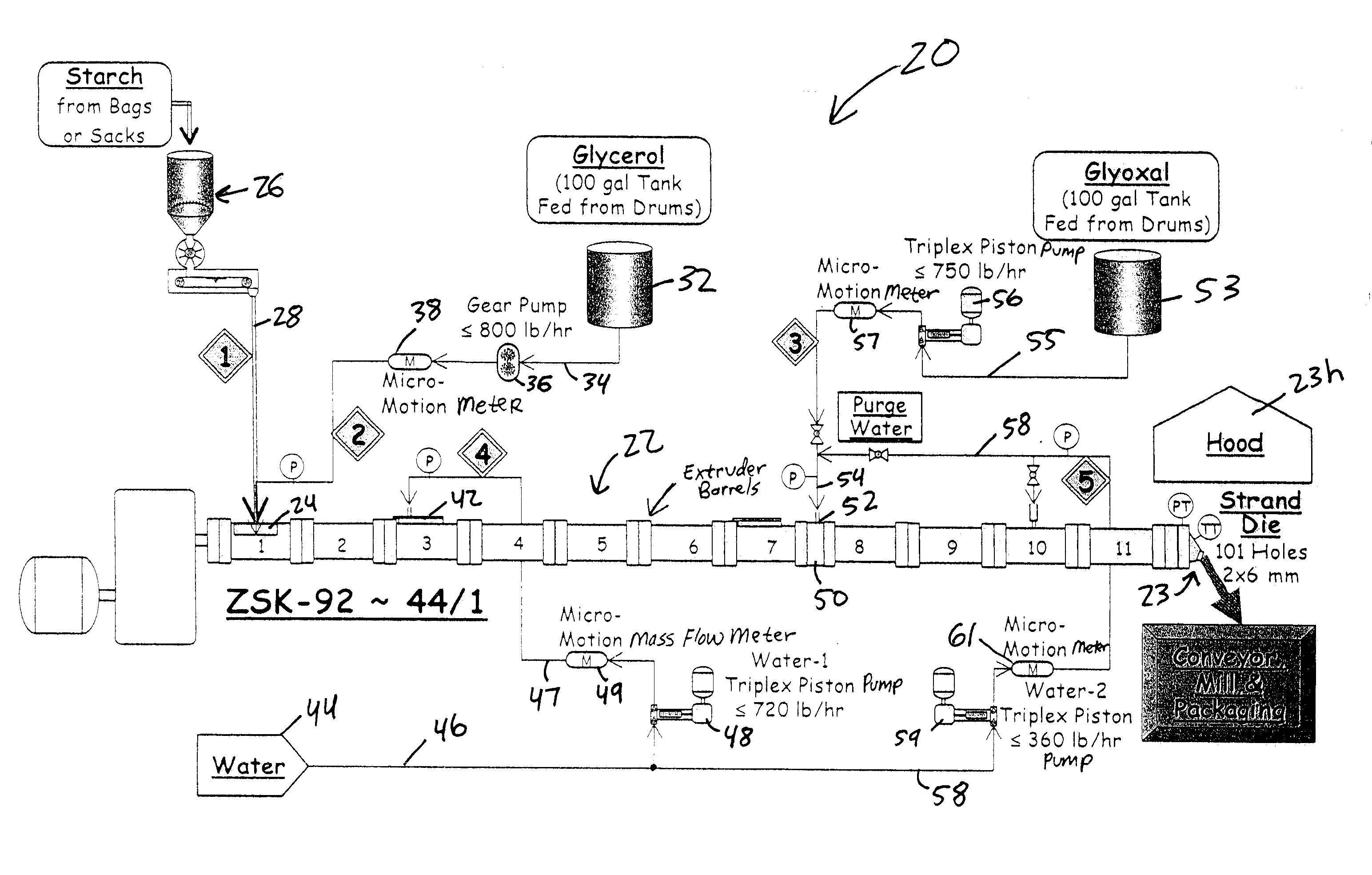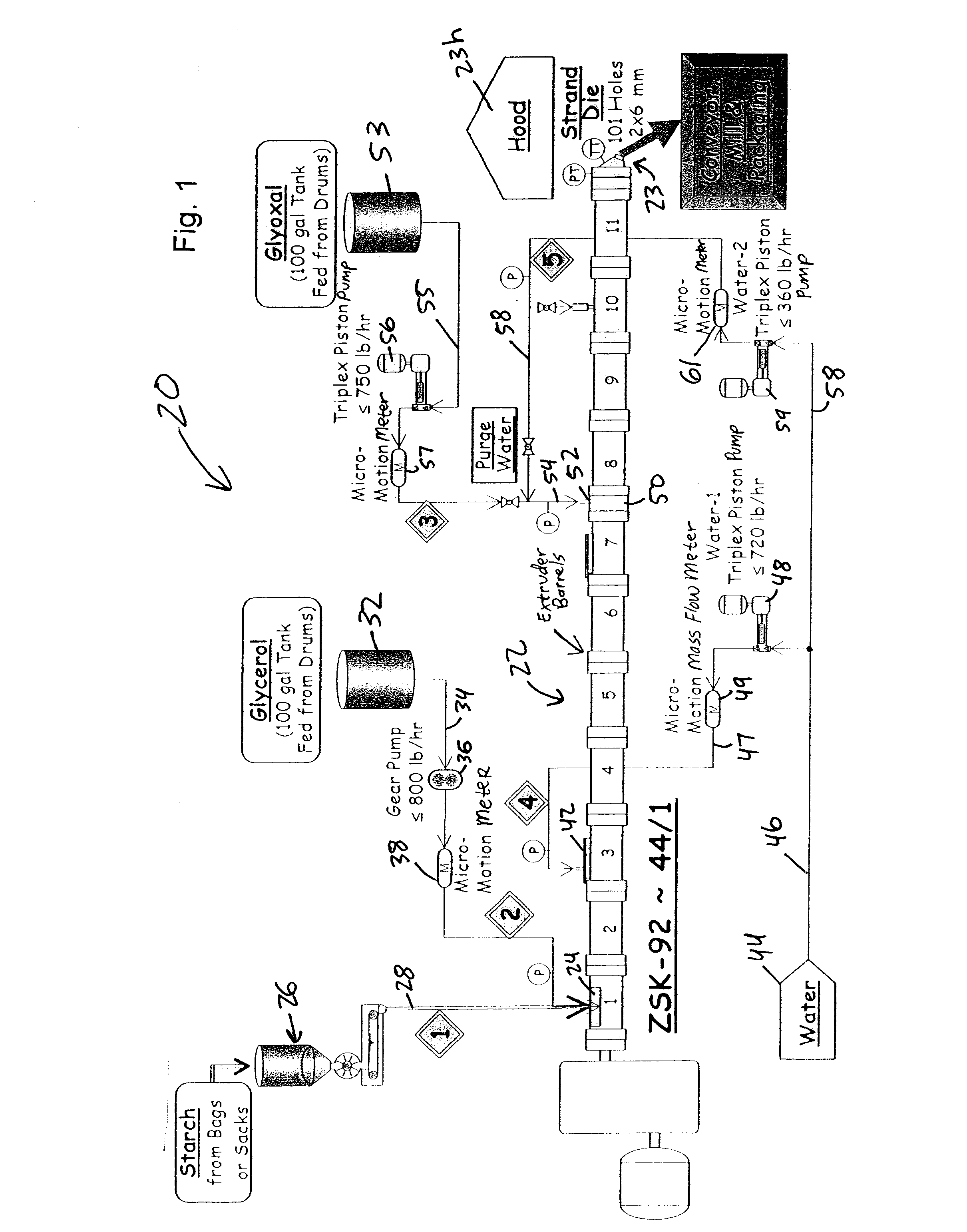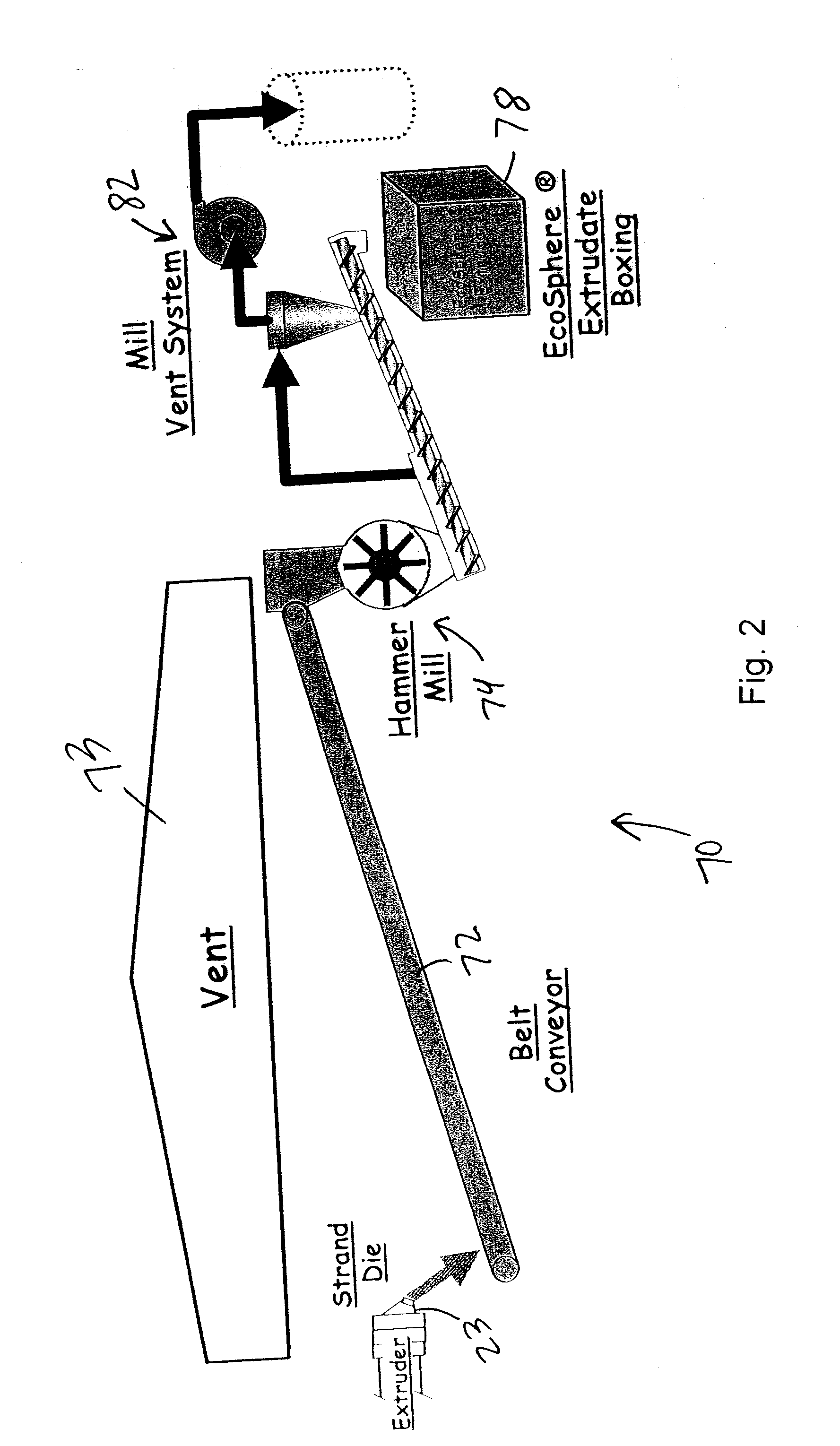Process for producing biopolymer nanoparticles
a biopolymer nanoparticle and nanoparticle technology, applied in the field of biopolymer nanoparticle production process, can solve the problems that the process described in u.s. patent no. 6,677,386 may not be able to keep up with the increasing demand for biopolymer nanoparticles, and achieve the effect of increasing the control of the viscosity of colloidal dispersion and increasing production rates
- Summary
- Abstract
- Description
- Claims
- Application Information
AI Technical Summary
Benefits of technology
Problems solved by technology
Method used
Image
Examples
examples
[0061]The following examples serve to illustrate the invention and are not intended to limit the invention in any way.
[0062]Specific feed and run conditions are listed in Table A and Table B.
examples 1 and 2
[0063]Examples 1 and 2 represent the initial scale up from a ZSK-58 extruder to a ZSK-92 twin screw extruder. See Screw #58-1 and 92-1 in FIG. 3. One extra barrel of solids conveying was used on the 92 mm extruder because an eight barrel configuration was not available. Because Screw #58-1 of FIG. 3 was deemed too strong (meaning this screw design put too much energy into the product), three left hand kneading blocks were removed from the gelatinization zone and one from the reaction zone for Screw #92-1 of FIG. 3. Also, an extra water injection was added along with the glyoxal (crosslinker) solution to allow evaluation of the effects of its concentration. As received, the glyoxal solution is 40% active in water. At two parts of glyoxal, this is equivalent to a base or minimum of 3 parts of water with it if no additional water is used. (See Table A.)
[0064]On startup, a preliminary gelatinization experiment without a die was run at 726 kg / hr and 300 rpm for a specific rate of 2.42 kg...
example 3
[0066]Example 3 is similar to Example 2 but represents a reduction in the quantity of water added downstream with the glyoxal (crosslinker) to determine the effect on the product viscosity. The extra water was reduced from 3.0 to 2.1 parts. The screw speed for Example 3 was 5% higher than that for Example 2. There was not a significant effect on the end product viscosity (measured as a standard 25% solids aqueous dispersion at 25° C. and 100 rpm on a Brookfield viscometer). More notably, viscosity was slightly higher even though the SME was about 10% higher in Example 3 due to the water and extruder rpm differences. In previous work, higher shear rates have resulted in lower dispersion viscosities. This is contrary to that and demonstrates that there are other controlling factors that affect viscosity. As with Example 2, steam back venting shut the line down after a short time.
PUM
| Property | Measurement | Unit |
|---|---|---|
| Temperature | aaaaa | aaaaa |
| Fraction | aaaaa | aaaaa |
| Angle | aaaaa | aaaaa |
Abstract
Description
Claims
Application Information
 Login to View More
Login to View More - R&D
- Intellectual Property
- Life Sciences
- Materials
- Tech Scout
- Unparalleled Data Quality
- Higher Quality Content
- 60% Fewer Hallucinations
Browse by: Latest US Patents, China's latest patents, Technical Efficacy Thesaurus, Application Domain, Technology Topic, Popular Technical Reports.
© 2025 PatSnap. All rights reserved.Legal|Privacy policy|Modern Slavery Act Transparency Statement|Sitemap|About US| Contact US: help@patsnap.com



